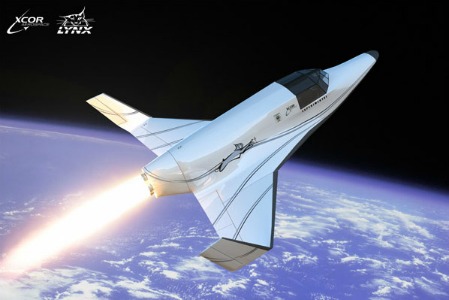I’ll have an interview with XCOR’s CEO Jeff Greason this month. But I thought you guys and gals would like to see one of the cool things they’re building, the Lynx, shown above. It will take off and land like a regular aircraft, and fly higher than the legendary X-15 rocket plane. Best of all, if and when the Lynx becomes operational, you can hitch a ride to the edge of space and earn astronaut wings for about 100k. Come on now, tell me you wouldn’t want to take that ride! For considerably more, people and organizations might be able to own their own spaceplane.
So a good question might be, what the hell is suborbital spaceflight good for? I took a crack at answering that here:
Research on materials and processes in microgravity have already resulted in breakthroughs in drug production, silicon wafer fabrication, and molecular biology. There may come a time when automated orbiting mini-factories grow flawless microchips of such quality, or produce pharmaceutical isomers of such purity, that our current earthbound efforts are crude by comparison. Just like pumps and valves, testing these experimental packages before spending millions of dollars to send them to space might save a ton of money for manufacturers.


Link to “that here” is broken.
Anyway – erm, huh?
> There may come a time when automated orbiting mini-
> factories grow flawless microchips
> what the hell is suborbital spaceflight good for?
If this plane, which does look very cool, can’t actually make it to orbit then no matter how good the reasons are for having stuff in orbit it’s not going to help.
Blog’s been going in and out all morning, seems to be working now. Lynx is designed purely for suborbital, I believe XCOR has other designs for the orbital market. The reason suborb is useful for orb processes is because prototype processes can be tested in the microgravity provided by suborb far more cheaply, by orders of magnitude, than they could be on high flying sounding rockets or orbital flights.